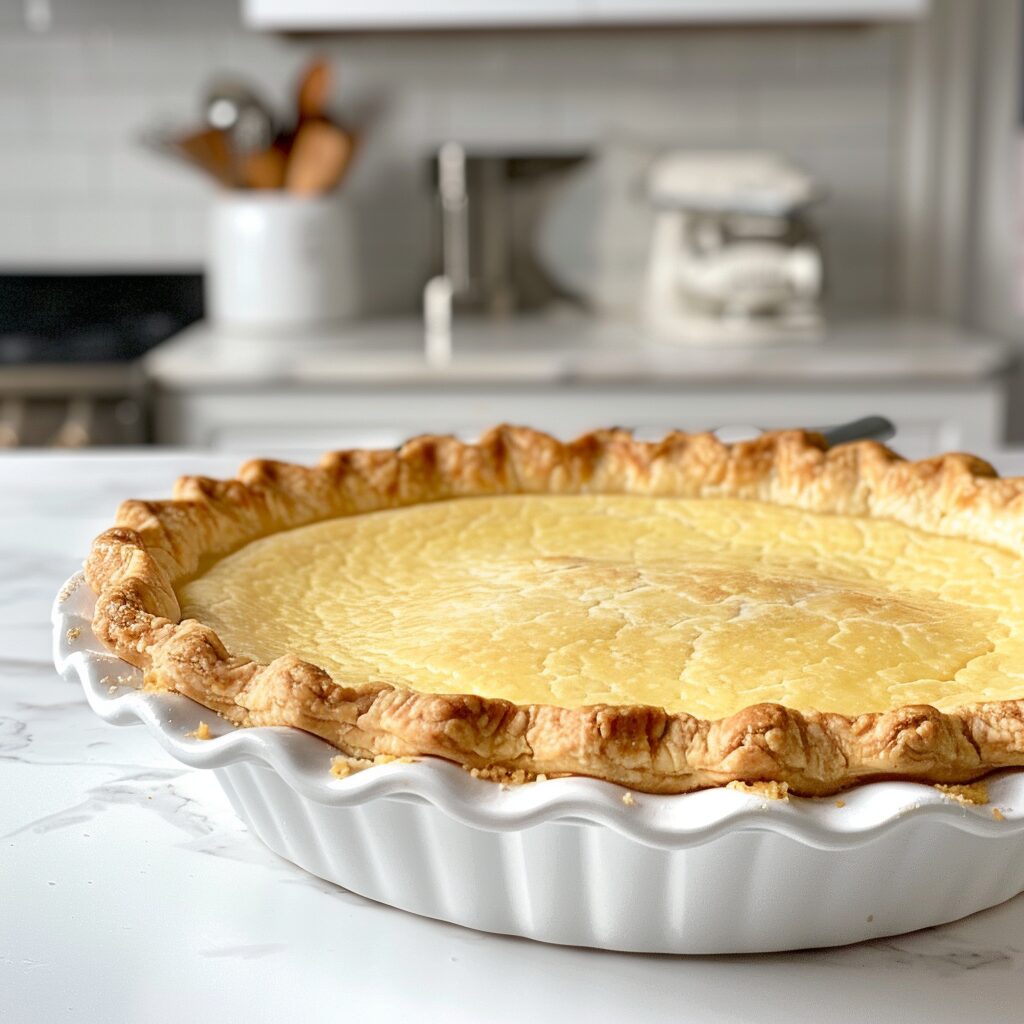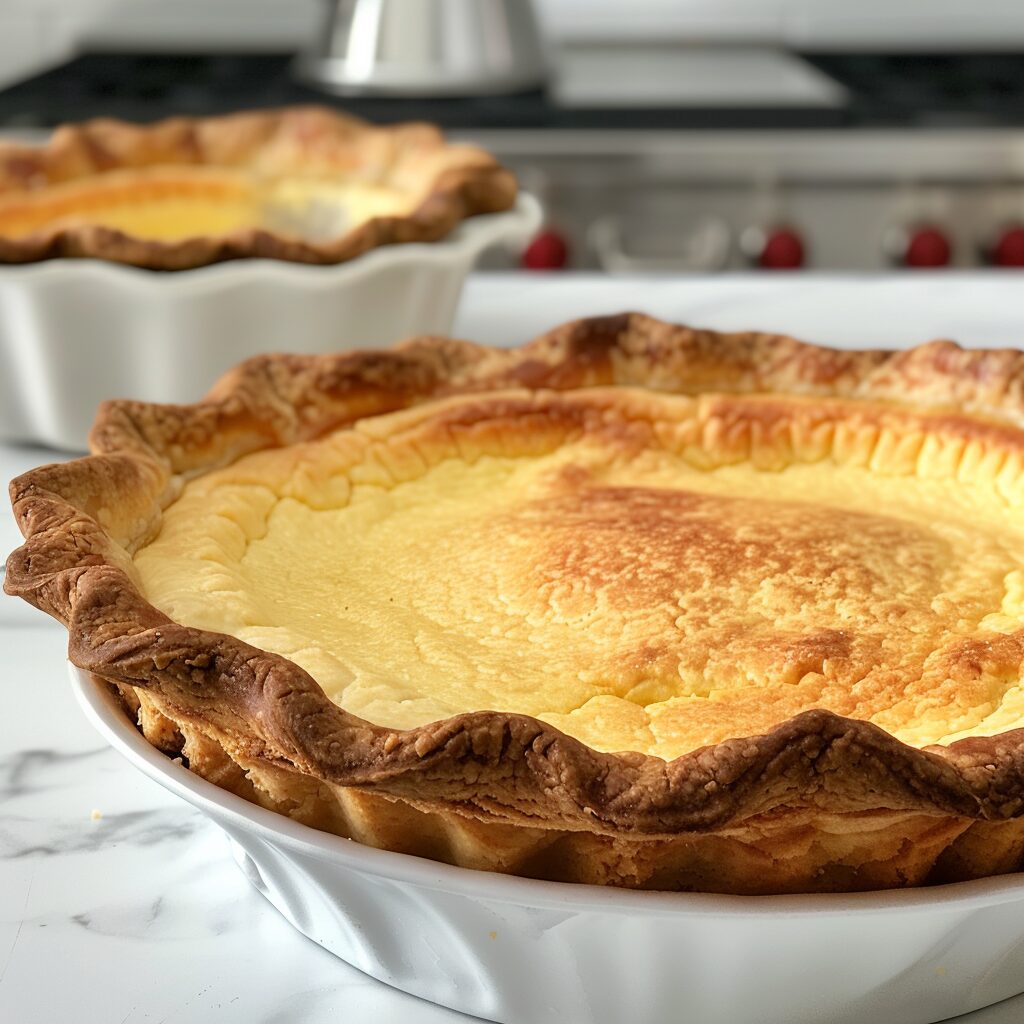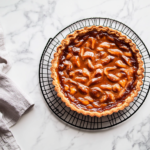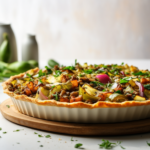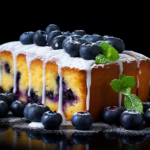Hey there! Anne Carter here from Beyond the Bayou Blog. Today, I’m excited to share my tried-and-true Buttermilk Pie Recipe with you all. After years of working in restaurants, I’ve picked up quite a few tricks in the kitchen, and this pie is one of my favorites.
It’s a simple, no-fuss dessert that always reminds me of my time in busy restaurant kitchens and family gatherings back home. This Buttermilk Pie has a creamy, tangy filling with a hint of sweetness that’s just perfect. It’s been a go-to recipe for me whenever I need a quick and tasty dessert.
Whether you’re a seasoned baker or just starting out, I promise this pie is easy to make and sure to impress. So, let’s roll up our sleeves and get baking! I’ll walk you through each step, just like I would if we were in the kitchen together.
What Is Buttermilk Pie?
Buttermilk pie might not sound enticing if you’re thinking of tangy buttermilk, but fear not! This Southern classic isn’t tangy at all. Instead, buttermilk serves as a perfect base, balancing the sweetness of its rich custard filling.
Originally introduced to the South by British immigrants, buttermilk pie has become a staple in Southern cuisine. You’ll find variations of this comforting dessert in nearly every Southern cookbook, each with its own unique twist.
So, whether you’re enjoying a traditional recipe passed down through generations or trying a modern version, buttermilk pie promises a slice of Southern hospitality and a taste of its sweet culinary history.
Why You’ll Love This Easy Buttermilk Pie Recipe?
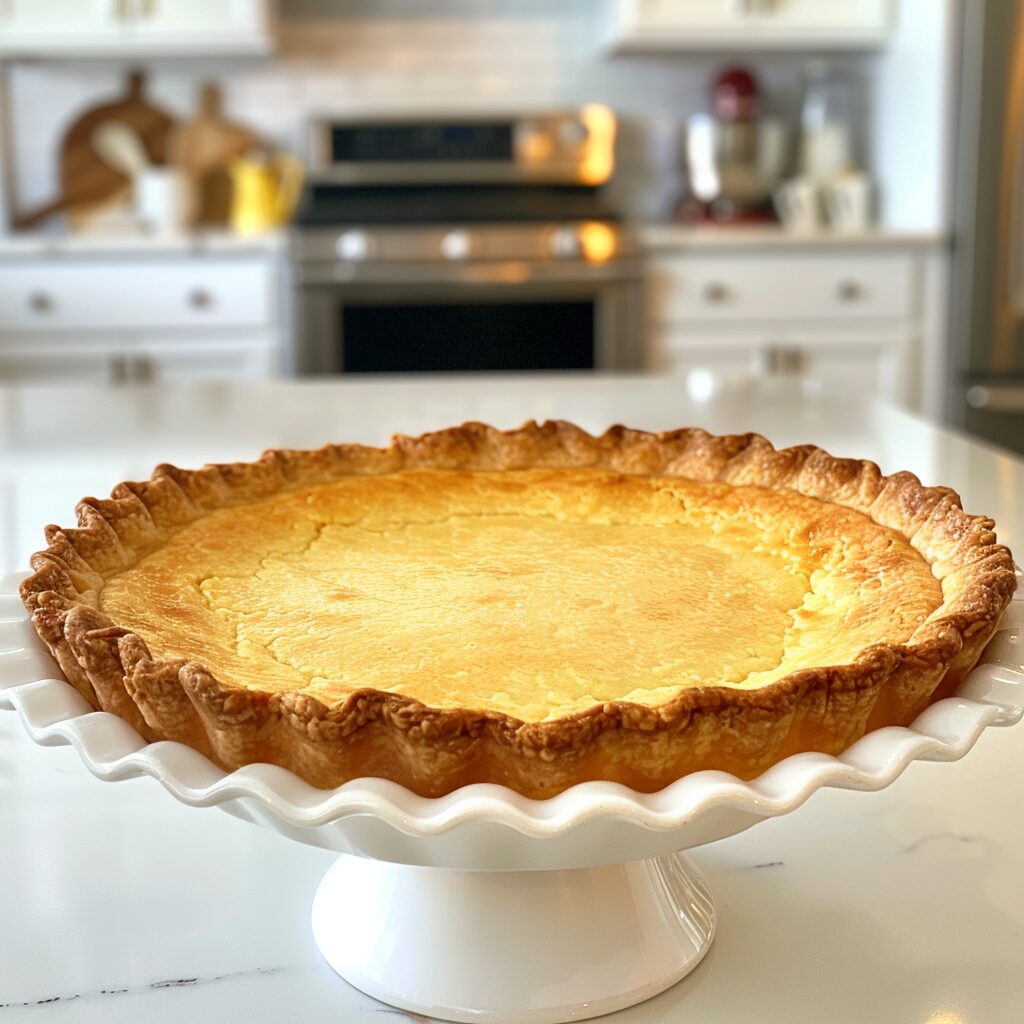
- Old-Fashioned Favorite: Buttermilk pie is a classic Southern dessert that’s easy to make and tastes like a creamy crème brûlée. It’s a delightful treat that brings back memories of traditional Southern baking, just like my grammy used to make.
- Creamy Custard with a Crisp Top: As it bakes, the filling magically transforms into a smooth, buttery custard while developing a delicate, crackly top. It’s a sweet surprise that might remind you of why some call it “impossible buttermilk pie.”
- Simple and Easy: This pie is perfect for beginners because it uses simple ingredients and straightforward steps. You won’t need to worry about tempering eggs like you do with other custard pies. Plus, any leftover buttermilk can be used for a delicious Buttermilk Cake.
- A Taste of History: Buttermilk pie has a fascinating history—it originated in England and made its way to America with settlers. It quickly became a Southern favorite, especially in regions where buttermilk was abundant.
Buttermilk Pie Recipe
Equipment
- Pie Dish
- Oven
- Spatula
- Cooling Rack
Ingredients
- 1 9- inch pie crust from scratch or a refrigerated pack of two
- ½ cup unsalted butter melted
- 1 ½ cups granulated sugar
- 3 large eggs
- 3 tablespoons all-purpose flour
- 1 tablespoon lemon juice
- ⅛ teaspoon ground nutmeg
- 1 teaspoon vanilla extract
- ¼ teaspoon salt
- 1 cup buttermilk
Instructions
- Preheat oven to 350°F (175°C).
- Place pie crust in a pie plate, crimp edges, and chill.
- Whisk melted butter, sugar, eggs, flour, lemon juice, nutmeg, vanilla, salt, and buttermilk in a large bowl.
- Set pie crust on a cookie sheet and fill with the mixture.
- Cover edges with foil or a pie crust shield.
- Bake for 45-55 minutes until golden brown and slightly jiggly in the center.
- Cool completely before slicing and store covered in the refrigerator.
Nutrition
Tips That You Must Consider!
- Use Real Buttermilk: For the best flavor and texture, opt for actual buttermilk rather than a homemade substitute. Its unique tanginess enhances the richness of the pie, making it worth the purchase.
- Keep It Cold for Flaky Crust: The secret to a perfectly flaky pie crust lies in keeping everything cold. Start with chilled butter and ice-cold water when making your crust. After shaping, refrigerate the crust until you’re ready to fill it. This ensures the butter stays solid until it hits the oven, resulting in a beautifully flaky texture.
- Watch Your Crust: Keep an eye on the pie crust while baking. If it starts to brown too quickly, cover the edges with foil or use a pie crust shield. This prevents the crust from over-browning while allowing the filling to bake evenly.
What To Serve With Buttermilk Pie?
